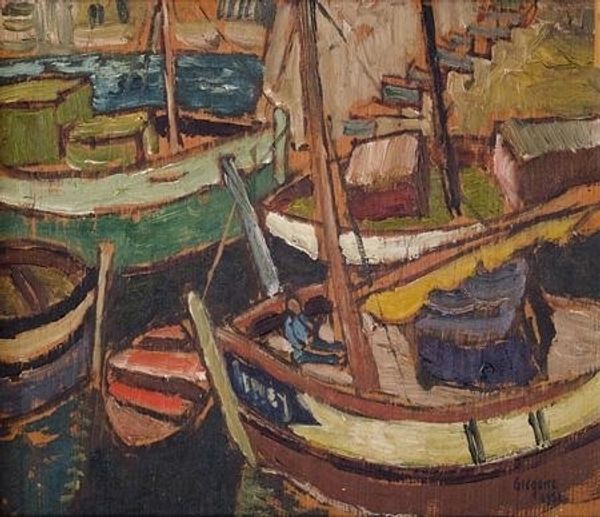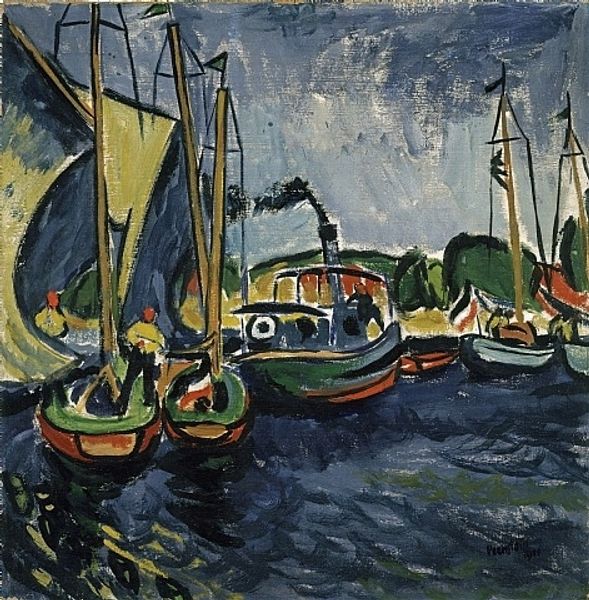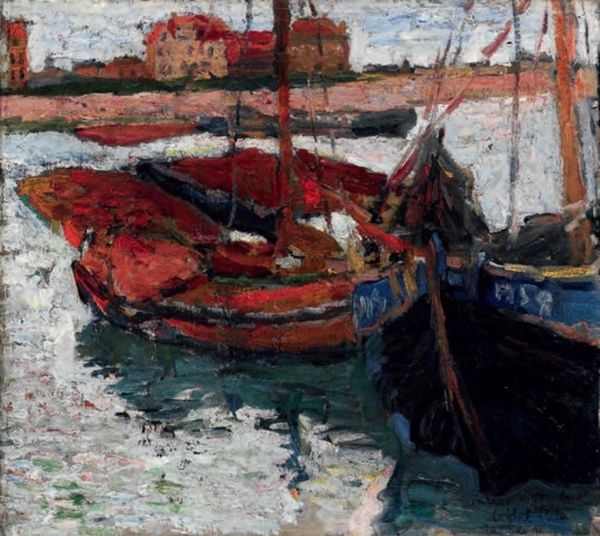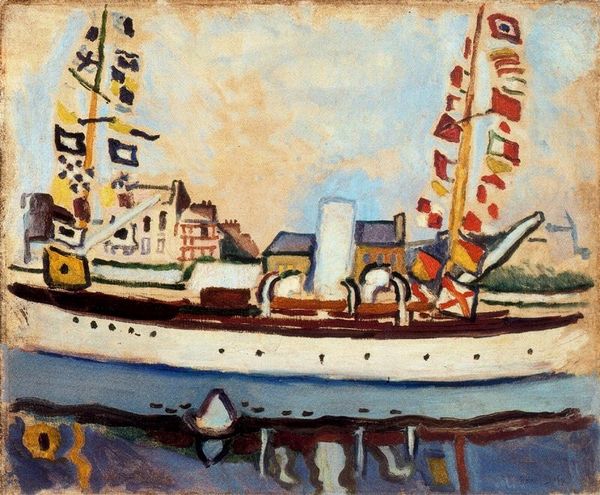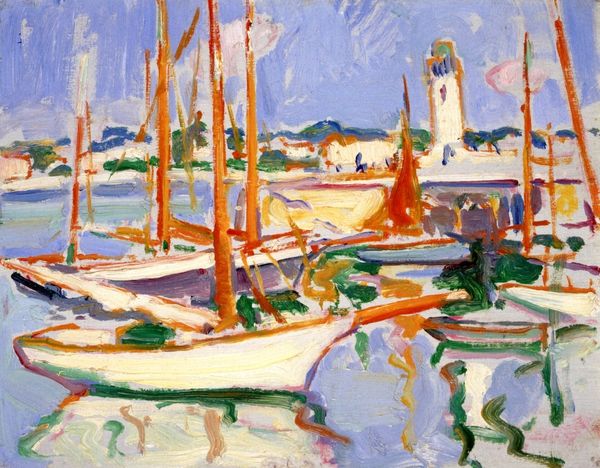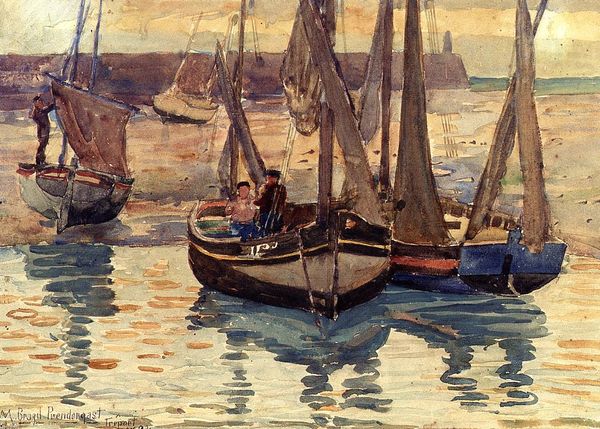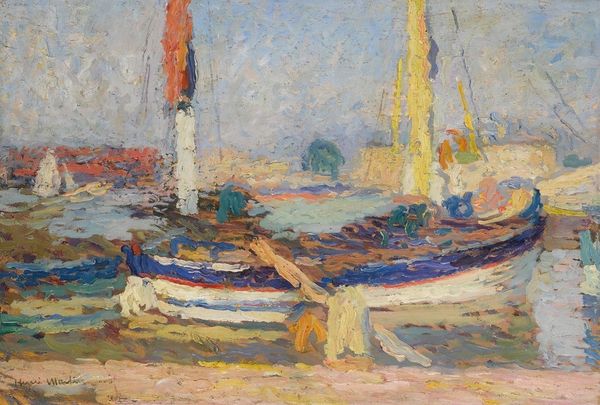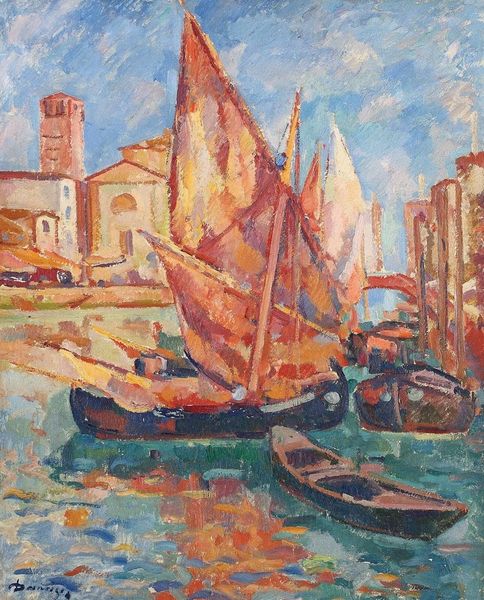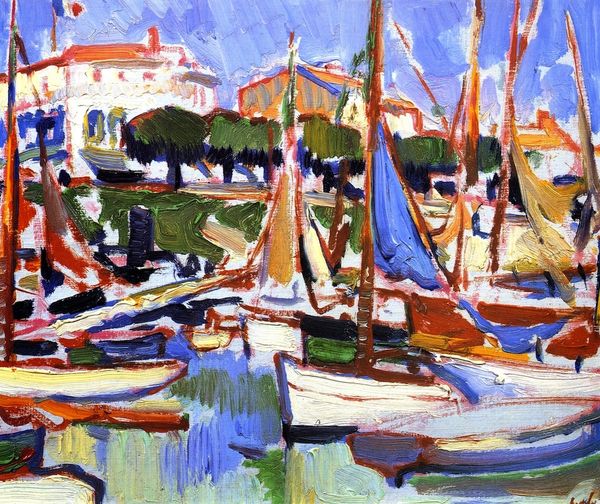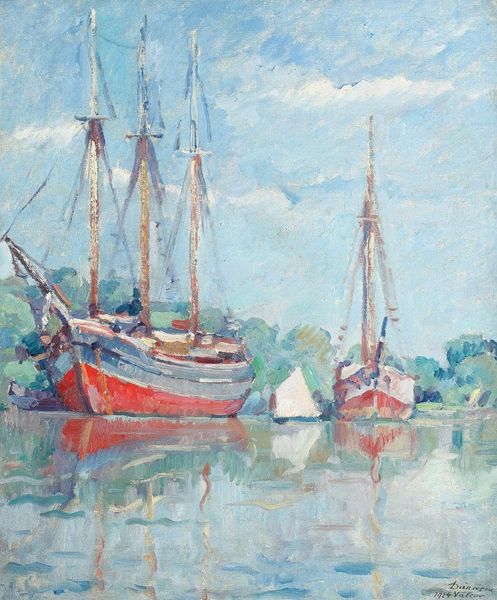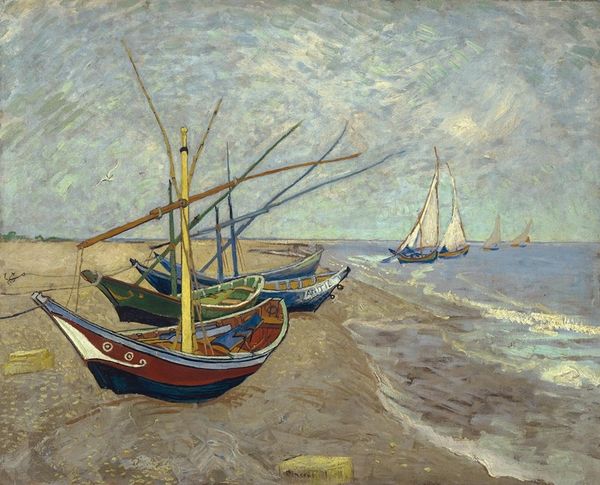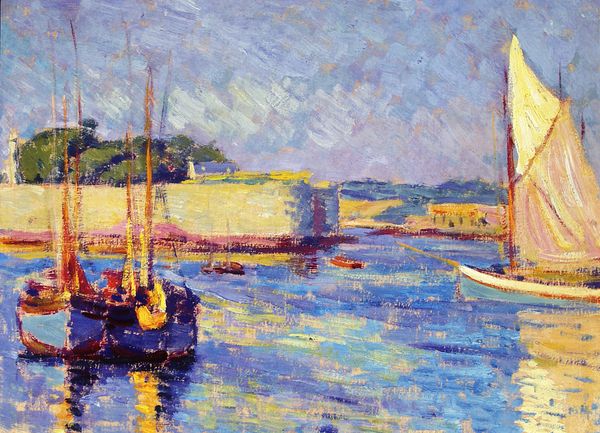
oil-paint, canvas, impasto
#
boat
#
canvas painting
#
oil-paint
#
vehicle
#
landscape
#
german-expressionism
#
impressionist landscape
#
canvas
#
impasto
#
expressionism
#
water
Copyright: Public domain US
Editor: This is "Nidden Coastline with Fishing Boats" by Max Pechstein, painted in 1909. It's an oil painting on canvas, and I'm struck by the bold colors. They almost seem to vibrate. What compositional elements stand out to you? Curator: The first element that demands attention is the arrangement of forms. Notice how Pechstein has structured the space through a dynamic interplay of vertical and horizontal lines. The masts of the boats punctuate the vertical axis, contrasted by the strong horizontal of the coastline. How does that distribution of color guide your eye? Editor: I see what you mean. My eye is drawn to that central red sail first, because it's such a strong, saturated color, but then the brushstrokes on the beach draw my eye downwards. Curator: Precisely. The impasto application of paint contributes significantly to the artwork's overall impact. Pechstein employs thick, textured brushstrokes, particularly noticeable in the foreground and reflected on the boats, don't you think? This impasto not only adds a tactile quality but also enhances the vibrancy of the colors. Editor: Yes, it's like the paint itself is full of energy. It gives a real sense of movement to the water and the reflections. It seems like the reflections in the water on the top-right vessel also create this triangle shape as the boat mirrors in the river; what would that shape typically infer? Curator: Ah, you're noting the potential dynamism suggested by the interplay between the top-right vessel and the surface reflection that can symbolize movement. Shapes typically are seen as geometric signifiers such as squares (grounded) or round circles (complete). The usage of the triangle suggests speed and change and is often associated with progress in the arts. Did anything else you note during our analysis of Pechstein's color application? Editor: Looking closely at the brushstrokes, they don't blend smoothly. It's more about individual strokes of different colors placed next to each other to create a shimmering effect. This reminds me of the impressionist art techniques; how does expressionism vary in that style through materiality of shape? Curator: A keen observation. While rooted in Impressionism's use of color and light, expressionism diverges through its intensification of these elements. Instead of merely capturing the surface appearance, Pechstein uses exaggerated color and bold brushwork to convey a sense of raw emotion, creating, as you indicated, movement and the triangle dynamism between reflection and sailing, giving materiality to shapes. Editor: This deeper dive has made me see how much more there is beyond just the bright colors. Curator: Indeed, it’s in understanding those building blocks, that we can explore artwork's unique and thought-provoking interpretation of the world.
Comments
No comments
Be the first to comment and join the conversation on the ultimate creative platform.
